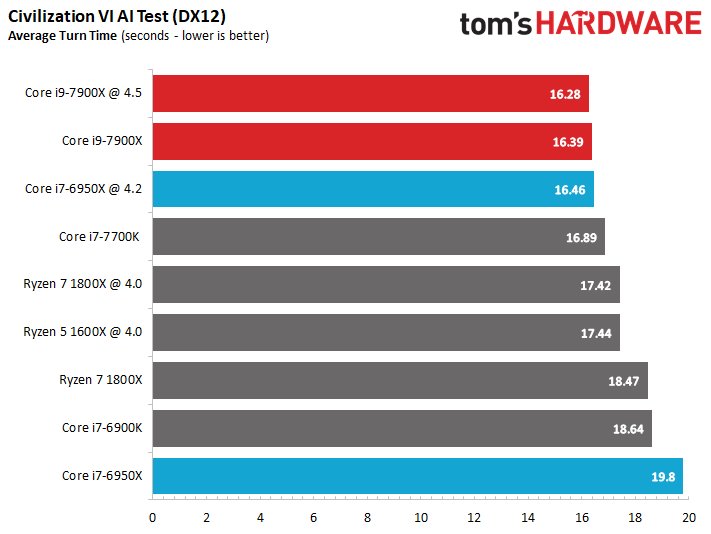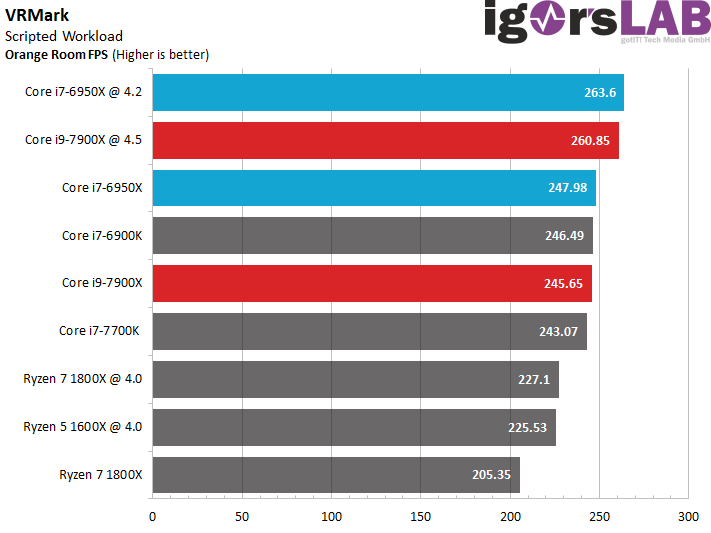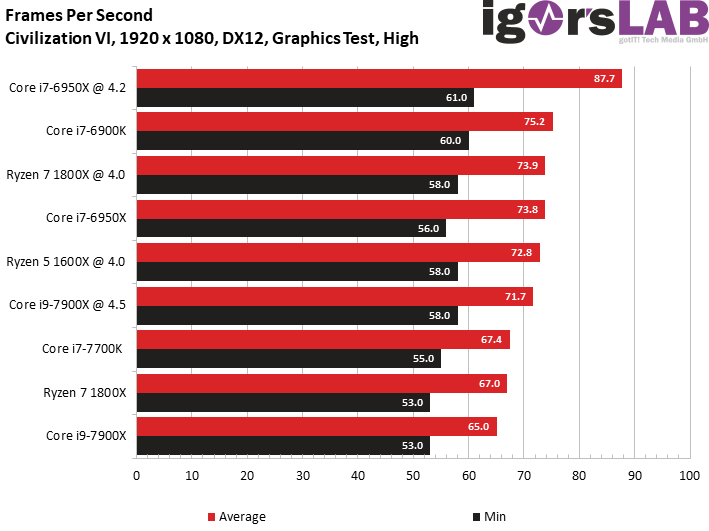Why should it always only hit AMD when a change of architecture leads to application-specific "collapses" in expected performance or, more simply put, the CPU in certain applications simply does not deliver what you want promised by her?
We've already addressed the differences between Broadwell-E and Skylake-X, but we'll see what this can mean in reality as the gaming and workstation benchmarks progress, but we'll see what this can mean in reality due to a lack of application optimization in the individual case. Here it meets Intel with full power and it shows once again how important the appropriate rework can be later. BIOS, drivers, application optimization – you can choose something or stuff everything in your pocket.
Civilization IV AI Test vs. VRMark
Let's look at the two benchmark results below! The AI test of Civilization VI reflects exactly what one might expect due to the different clock rates and architectures. So far the world is still healthy and the tester is satisfied with himself and the hardware.

But at the latest, when you have completed VRMark, you get into thinking. What the hell has actually happened here? The nominally much slower Core i7-6950X suddenly wipes the floor with the Core i9-7900X? You really have to let the following graphic melt on your tongue:

Mesh instead of ring bus – optimization does not necessary
But what happened? Since we have noticed such outliers down several times throughout the benchmark history, we have contacted Intel and communicated our measurement results. We have already quoted the answer on page two in the original, because it shows very nicely the hurdles with which even a player like Intel has to contend strongly when it comes to something technically new.
Intel, like AMD at Ryzen, is thus struggling with a problem that affects the optimization of the software towards the respective platform and extends from source code to compilations. So let's take a look at Civilization IV in detail, because the AI test isnot everything.
Civization IV and the pitfalls of the object
If we consider the game as a complete work of art, the lead of the Core i9-7900X from the AI test is suddenly history and the CPU is almost sawn off. Let's first take a look at the bare FPS numbers:

Of course, the absolute frame rates themselves do not say everything about immersion and the subjective feeling could look completely different. But in the case of Civilization VI, the disadvantage of the Core i9-7900X is obvious. In the following chart gallery, the frametimes and the incorruptible Uneveness index show very clearly that the subjective feeling could be even worse than the pure FPS numbers can!
We will therefore focus on this fact as the gaming tests progress, and we will contrast the graphics for the FPS numbers and the detailed chart analyses for each game separately. But we will also have to return to the mesh problem in the workstation and HPC tests.
- 1 - Einführung und Übersicht
- 2 - Intels Fabric - Mesh statt Ringbus
- 3 - Cache und Latenzen, IPC, AVX und Kryptographie
- 4 - Chipsatz, Testsystem und -methoden
- 5 - Problemanalyse mit Civilization VI und VRMark
- 6 - AotS Escalation, Battlefield 1, Deus Ex: Mankind
- 7 - GTA V, Hitman, Shadow of Mordor
- 8 - Project Cars, Rise of the Tomb Raider, The Division
- 9 - Workstation und HPC
- 10 - Leistungsaufnahme und Übertaktung
- 11 - Temperaturverläufe und thermische Probleme
- 12 - Zusammenfassung und Fazit

































Kommentieren